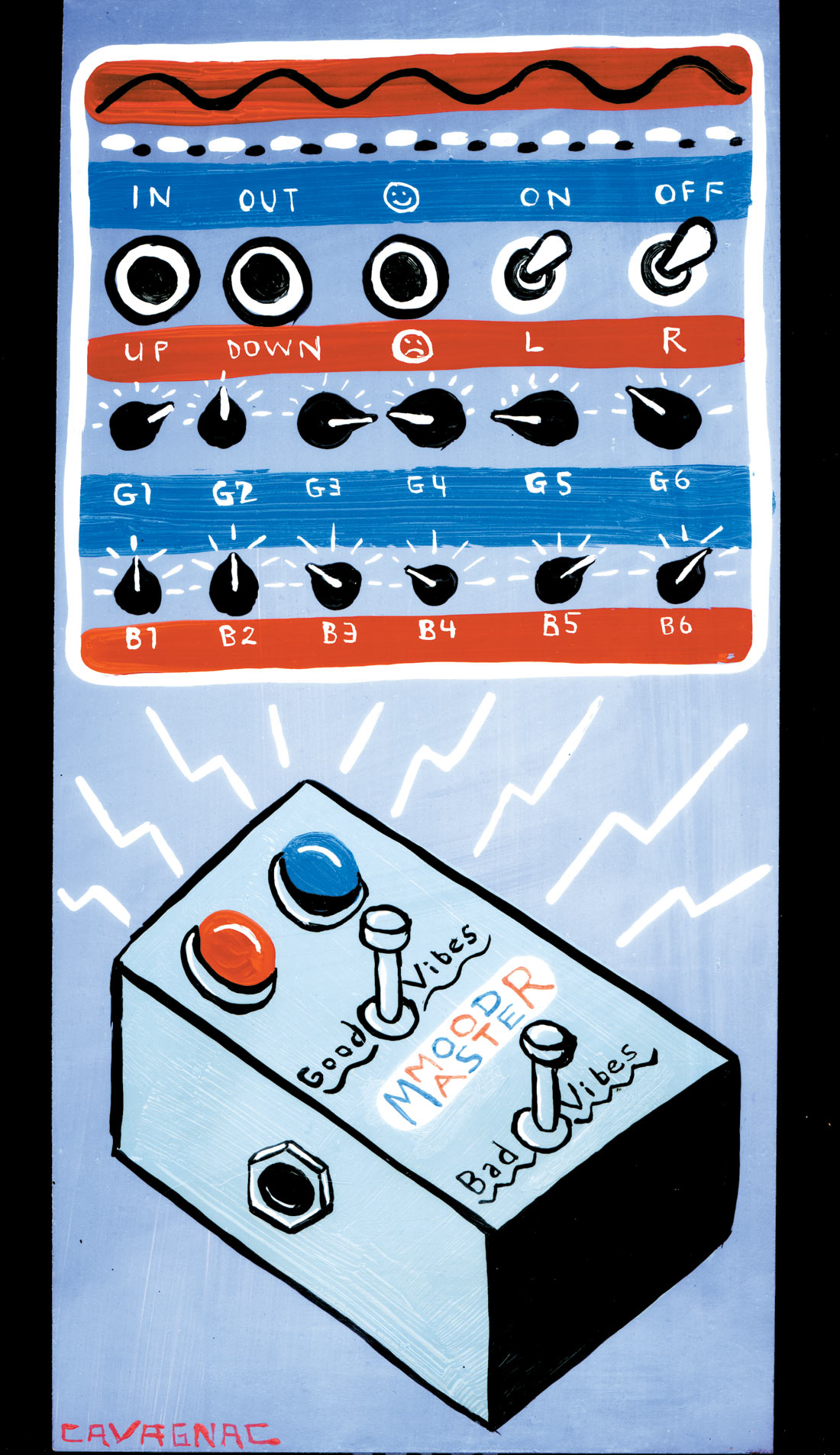Wow, am I in preamp heaven or what? For the past few months, I've had a bunch of awesome mic preamps in my studio from Seventh Circle Audio (Tape Op #54), Purple Audio (see review in this issue), and A-Designs... supplementing my already decent collection of outboard mic preamps. You may recall Larry's review of the A-Designs Pacifica preamp that's based on the sound of the solid-state preamps in Quad Eight consoles (Tape Op #49). The market is currently flooded with clones and mutations of Neves and APIs, so it's nice to see the P-1, which is a modular version of the Pacifica, and the EM series, which are all variations of the P-1. These preamps fit into 500-series frames. I mounted them into a Brent Averill 11-space chassis alongside my vintage API and new BAE preamps.
The A-Designs website not only describes how each of its preamps differs in circuitry (via custom-wound input and output transformers), but it also includes comments on how each preamp sounds and for what application it might excel. I chose not to read what's on the website and instead ran shootouts between preamps over multiple sessions with many different mics, taking judicious notes. All of the A-Designs preamps sound fantastic, but each has its own unique personality. In this review, I'll focus on these differences.
The P-1 has a sneaky bit of graininess to it that can really bring a track forward without sounding EQ'ed. For example, in front of a dense mix of guitars recorded through SCA J99 and Neve 1272 preamps, I found it easy to keep a P-1-recorded lead vocal at a reasonable "indie rock" level and still have it be 100% intelligible. That same graininess really brought out the crunch on electric guitars, making them sound very much "in your face". The EM-Blue was clear and its bite a bit smoother, especially on vocals; and on electric guitars, it generally had less lower mids and a bit more upper-mid presence-with a little less oomph on chords-than my API preamps. The EM-Silver was even smoother (and glassy in a Jim Hall Concierto kind of way on clean electric) than the Blue, while the EM-Red seemed very similar in tone to my APIs. In fact, I felt that the Red's guitar tracks, with a healthy dose of midrange punch, were easiest to sculpt with EQ. Vocals recorded on the Red tended to be warm and pillowy-a welcome surprise given how midrange-forward the Red seems.
I got some of my best cymbal and tom sounds ever with a Royer SF-12 stereo ribbon (mounted four feet above the kit) going into a pair of P-1s. As I patched in preamp after preamp, I felt that there was a sense of immediacy that I was getting with the P-1 that I wasn't getting with API, BAE, or any of the SCA preamps. But this was at the expense of reduced sustain in the snare. The Red was most even-sounding to my API-accustomed ears, bringing up more kick, snare, and high hat than the P-1. The Blue was softest, only catching the "Pa!" of the kick but bringing out lots of wonderful breath from the cymbals. The Silver felt a little too dark for me in this application, but the highs, while not strong, sounded incredibly smooth even when EQ'ed heavily.
On kick and snare close mics, I preferred the EM-Red. It sounded similar to my API and BAE preamps, but with less bottom, and the body of the snare was captured well. The Blue was softer on the attack of the kick but with a good deal more resonance heard in the tail. The P-1 had snappier upper mids and less lower mids. With all of the A-Designs preamps, I noticed a whole bunch of infrasonic energy coming through, especially with an Earthworks omni on kick. Apparently, their frequency responses extend way below what's normally audible.
I also tried all of these preamps as DIs for electric bass, and I generally preferred the EM-Blue because it was least muddy and had the most definition. The P-1 had much less bottom (resulting in too much "Puh"), but it had a really nice growl that the other preamps lacked.
One controversial comment I remember making when I was interviewed for Tape Op years ago is something I still believe today: spend money on preamps first, not on mics. Sure I own many mics now with price tags in the multi- thousands. But more often than not, I'm still using very affordable mics and plugging them into great-sounding, "high-end" outboard preamps. Why? Because I find that the character that a preamp imparts on a signal is harder to change with the normal mixing tools of our trade (EQ and compression) than the sound of a mic, especially when you're mixing a whole bunch of tracks together. A crappy preamp will always sound crappy. And mixing together many tracks of a crappy preamp will result in mud. These days, there are lots of fantastic mics in the $100-$500 range, and paired with a well-designed and well-built preamp like the A-Designs P-1 or EM series, you'll get amazing sounds. And better yet, since the A-Designs preamps come in so many different flavors, you can weave a variety of textures by choosing different preamps for different applications; and once all your tracks are stacked, mixing will be that much easier... and more fun! ($850 MSRP each; www.adesignsaudio.com)




_disp_horizontal_bw.jpg)